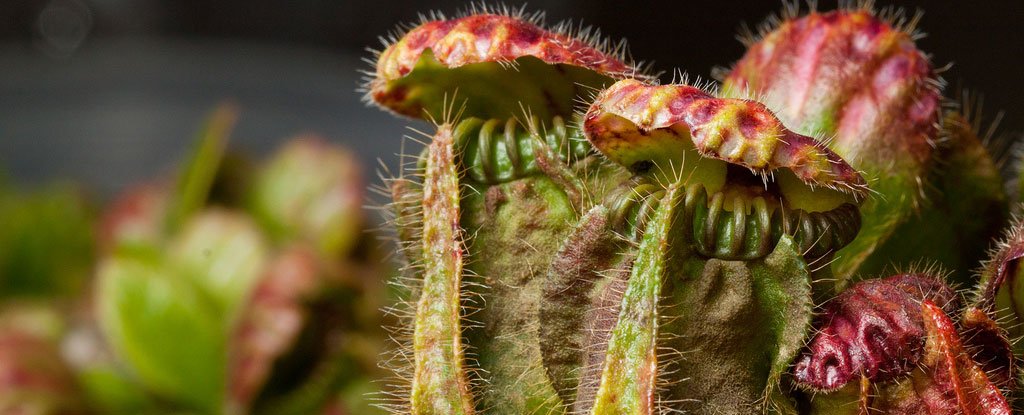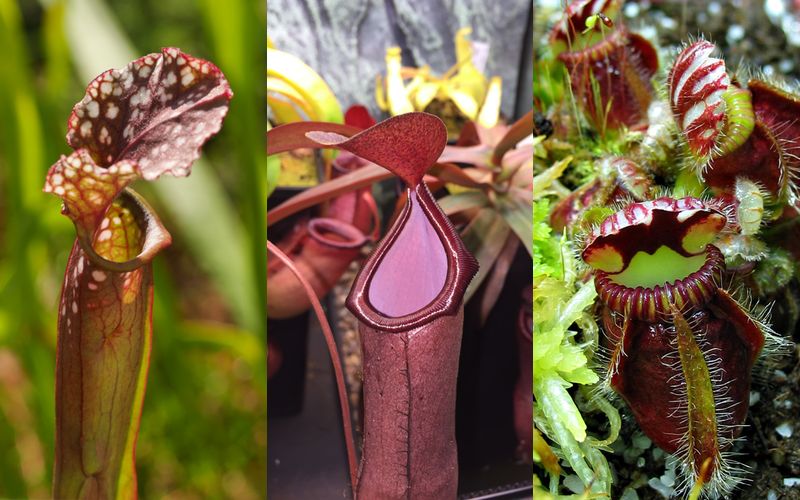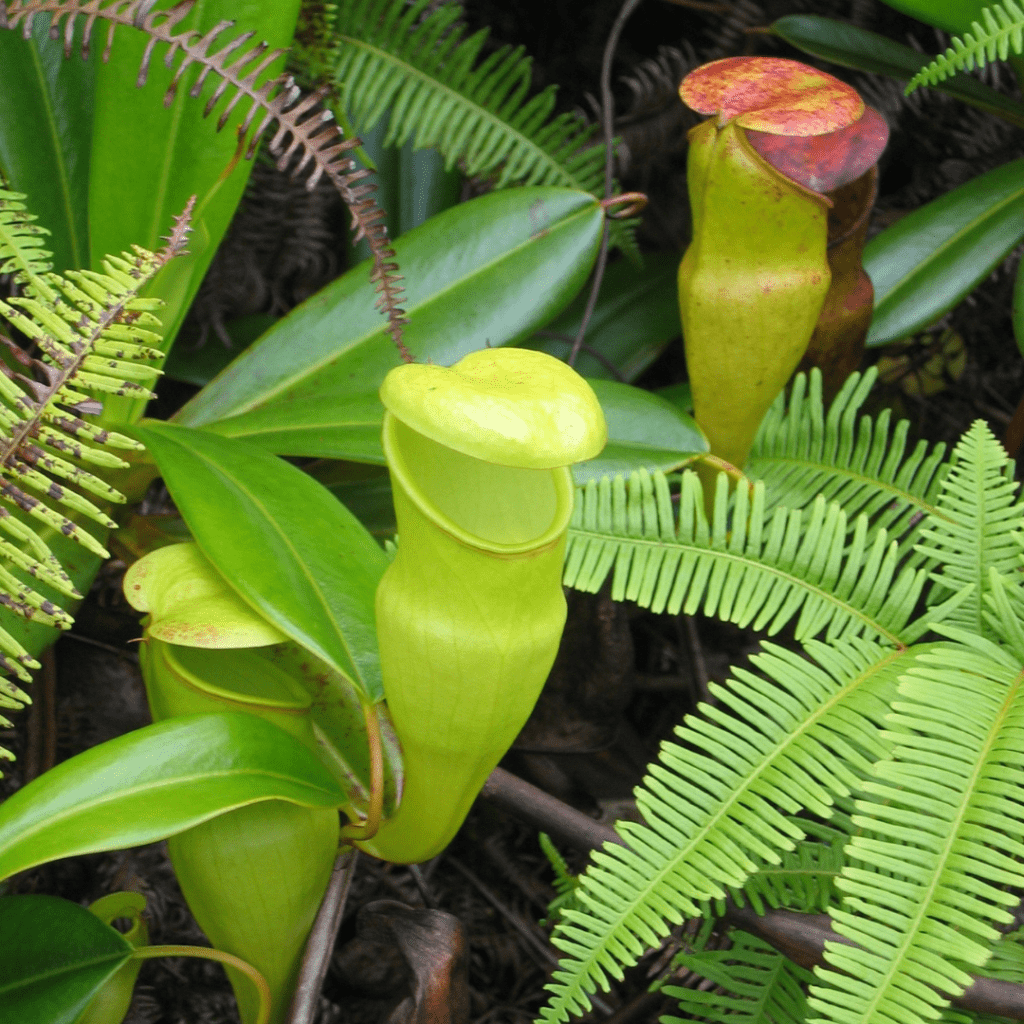21+ Pitcher Plant Adaptations
Trees are naturally growing in tropical climates so they do not require dormancy. Web Pitcher plants have distinctive adaptations for living in nutrient-poor soils.

Pitcher Plant Nature S Raincoats
You will have to experiment with this until you get it right.

. Web The adaptation is in the leaf structure. The plant has nectar glands to attract the prey as well as digestive enzymes to obtain nutrients. Web Why Do Sundew Plants Have Sticky Hairs on Their Leaves.
Web The leaves are clearly adapted to function like flowers in attracting insects. What I have noticed is that students are commonly tested on their ability to identify if an adaptation is structural or behavioural. Woolly bats Kerivoula hardwickii fertilize carnivorous pitcher plants of the species Nepenthes.
They evolved the ability to eat meat. Web Great for an adaption unit. Hair growing downward to stop insects from escaping.
Sarracenia rubra has created an advantage over most of the other plants in their environment. Pitcher plants are found in a wide range of habitats with poor soil conditions and rely on carnivory to obtain nutrients such as nitrogen and phosphorus. Web Here we empirically investigated the stabilization of an animal-plant mutualism.
The families Nepenthaceae and Sarraceniaceae are the most species-rich families of pitcher plants. Web Aim for a steady and consistent water level 6 inches 15 cm below the soil. Web Pitcher plants are carnivorous plants yes really carnivorous with deep pitcher-like cavities full of digestive juices a nightmare for the unsuspecting preyusually insects but sometimes small birds lizards frogs and in some cases even ratsthat wander in without a clue about what awaits them.
Web Pitcher plant. The Fascinating World of a Carnivorous Plant. Sarracenia oreophila green pitcher-plant ESA Status.
Over many thousands of years the pitcher plant has developed modified leaves called a pitcher that insects fly or crawl into but can not crawl out of. Web Biology Ecosystems and habitats Key points Plants adapt in many ways so that they survive in different habitats. Web Carnivorous plants such as the Venus flytrap and the pitcher plant Figure 2 grow in bogs where the soil is low in nitrogen.
Fish Wildlife Service Species Profile link below for links to listing and other USFWS. Students expand their comprehension and vocabulary skills with concept maps summary strategies and magic square assessment. The carnivorous plant then absorbs the.
Web Pitcher plant any carnivorous plant with pitcher-shaped leaves that form a passive pitfall trap. They are flowerlike in their striking colour patterns and shapes and during their active period in the summer they exude nectar containing fructose which is highly attractive to some insects. Web Sarracenia rubra Adaptation.
Includes a printable version. Web 1 Types edit The term pitcher plant generally refers to members of the Nepenthaceae and Sarraceniaceae families but similar pitfall traps are employed by the monotypic Cephalotaceae and some members of the Bromeliaceae. These carnivorous plants produce a pitcher-shaped structure with a pool of water in it.
Web Millions of years ago some photosynthetic plants underwent an incredible adaptation. A Fascinating Carnivorous Plant with Unique Features. Specifically made for Google Classroom and perfect for distance learning.
The fragrant scent is overpowering the color is vibrant and the nectar is sweet. In these plants leaves are modified to capture insects. Drosera Esterhuyseniae The Unique and.
Using insects as a source of nitrogen in. The Fascinating Drosera Kenneallyi A Carnivorous Plant with an Endless Appetite. Pitcher plants require winter protection because they prefer tropical climates.
Pitcher plants or pitfall traps are carnivorous plants whose prey-trapping mechanism features a deep cavity filled with liquid known as a pitfall trap. Web Best Answer Copy 1. In these aquatic areas the soil is.
Many swamp plants have adaptations that enable them to thrive in wet areas where their roots grow submerged underwater. The pitcher plant is able to obtain nutrients from insects and other prey which gives Sarracenia rubra a gain in the competition to survive. Drainage holes or channels should be placed about 6 inches 15 cm below the plant in the growing medium.
The leaves of Nepenthes have a stalk and blade as in many other plants but the tip of the leaf continues as another stalk then curves upwards and expands into an open chamber shaped like a jug and topped by a little flap operculum. The above text is. Web The pitcher is an amazing evolutionary adaptation.
Students will discover the why and the how of pitcher plants. Web Rare plants may be scarce because there are just a few individuals restricted to a narrow geographic range occur sparsely over a broad area andor many crowded into a tiny area. Web The tropical pitcher plant is a fascinating carnivorous plant that has adapted to life in the tropical regions of the world.
Web Wyeomyia smithii the pitcher plant mosquito is an inquiline mosquito that completes its pre-adult life cycle in the phytotelma ofthat is the water contained bythe purple pitcher plant Sarracenia purpurea. Special characteristics of a pitcher plant and how they help the plant to survive. Web Pitcher plants such as sarracenia which are perennial go dormant in the winter.
Monitor the water during your rainy season so it doesnt get too high. The genus includes about 170 species 4 and numerous natural and many cultivated hybrids. The pitcher shape to trap insects inside.
Darwin called it carnivorous syndrome But while the appetites of most flesh-eating plants such as Venus flytraps lean mainly toward small insects tropical pitcher plants have much more surprising diets all. Web Key differences between structural adaptations and behavioural adaptations. Sarracenia is affected by temperature changes in varying degrees.
The aroma to attract insects. Web Nepenthes nɪˈpɛnθiːz is a genus of carnivorous plants also known as tropical pitcher plants or monkey cups in the monotypic family Nepenthaceae. These adaptations exist because they give a survival advantage.
Plants in tropical pitcher gardens collect nitrogen by hanging it in glass jars.

Tropical Pitcher Plants Are Beautiful But Deadly Magazine Articles Wwf

Adaptations Of A Pitcher Plant The Flesh Eating Plant Primary School Science Tuition The Smart Student

Plant Species Carnivorous Plant Resource

Tropical Pitcher Plant San Diego Zoo Animals Plants

Convergent And Divergent Evolution In Carnivorous Pitcher Plant Traps Thorogood 2018 New Phytologist Wiley Online Library

Convergent And Divergent Evolution In Carnivorous Pitcher Plant Traps Thorogood 2018 New Phytologist Wiley Online Library

Scientists Finally Understand How Pitcher Plants Developed The Taste For Flesh Sciencealert

Faq How Did Carnivorous Plants Evolve Tom S Carnivores

The Living Breathing World Of Borneo S Carnivorous Pitcher Plants

Plant Species Carnivorous Plant Resource

Pitcher Perfect A Plant Adaptation Youtube

The Amazing Adaptations Of Carnivorous Plants Shadow
How Has The Pitcher Plant Adapted To Its Environment Quora

The Basic Anatomy Of The North American Pitcher Plant Sarracenia Download Scientific Diagram

Tropical Pitcher Plant Growth In One Year R Savagegarden

Carnivorous Pitcher Plants Insights In An Old Topic Sciencedirect

Nepenthes Alata Pitcher Plant Carnivorous Plant Care Difficulty Moderate Amiesue Com